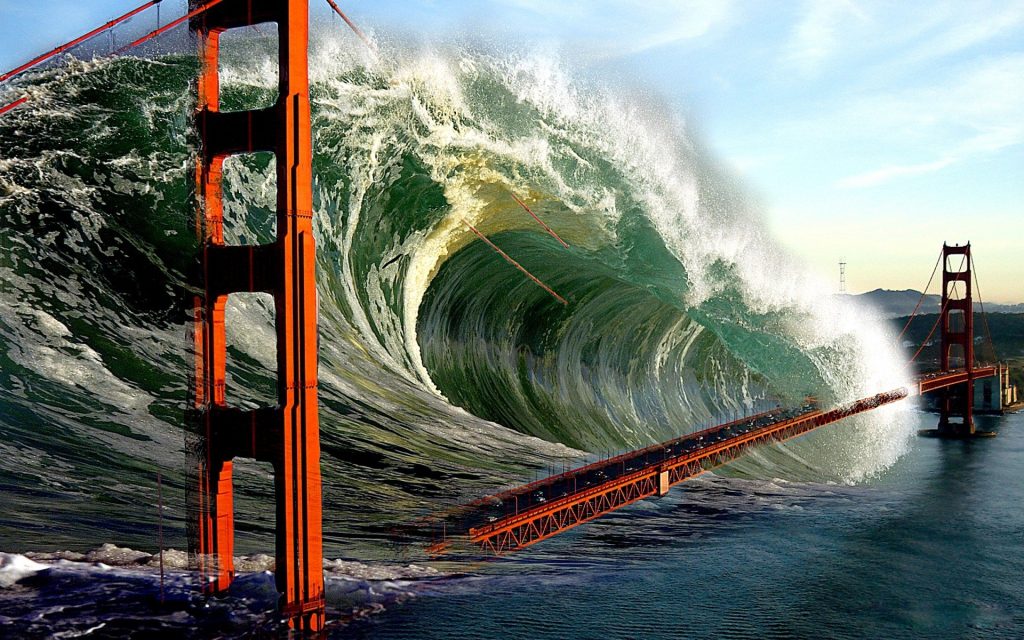
- DEFINION:A Tsunami is a natural disaster that is caused by a huge release of energy in the ocean.
- It is usually caused by an underwater earthquake, landslide or volcanic eruption
- .The word “tsunami” is Japanese and means “harbor wave”, as these waves can reach heights of up to 30 meters and causes bad effect on coastal areas.
- Tsunamis can travel hundreds of miles in the open ocean and cause destruction when they reach land.
- The waves can reach heights of up to 30 meters (100 feet) and speeds of up to 800 km/h (500 mph).
- The waves can travel up to 1000 km inland, destroying everything in its path.
- The waves can destroy buildings, roads, bridges and other infrastructure.
- People are often caught off guard by the suddenness and force of a Tsunami and can be swept away by the powerful currents.
- In some cases, entire villages have been destroyed.
- The effects of a Tsunami can last for days or even weeks after the initial wave.
- Debris from the destroyed buildings and infrastructure can be washed onto the shore and can cause further damage.
- The strong currents can also cause flooding and erosion in coastal areas.
- The best way to protect yourself and your family from a tsunami is to be prepared and make sure you know the warning signs of a tsunami and where to go if one occurs.
- Make sure you have an emergency evacuation plan in place and know where the nearest high ground is.
- Also, make sure you have an emergency kit with supplies such as food, water, and first aid supplies.
- The damage caused by a tsunami can be terrific. It often results in the loss of life and property, as well as severe environmental damage.
- Tsunamis are difficult to predict and can strike with little warning.
- They are also difficult to detect until they reach the shoreline.
- In areas that are prone to tsunamis, it is important that people are aware of the risks and how to respond.
- One of the most effective ways to prepare for a tsunami is to create a warning system.
- This includes the installation of early warning systems, such as seismographs and buoys, which can detect the signs of a potential tsunami.
- It is also important to create an evacuation plan and ensure that everyone in the area is aware of it.
- Although tsunamis can be devastating, there are measures that can be taken to reduce the damage they cause.
- By creating a warning system, educating people in the area about the risks, and creating an evacuation plan, the effects of a tsunami can be minimized.

sunami, sunamy
